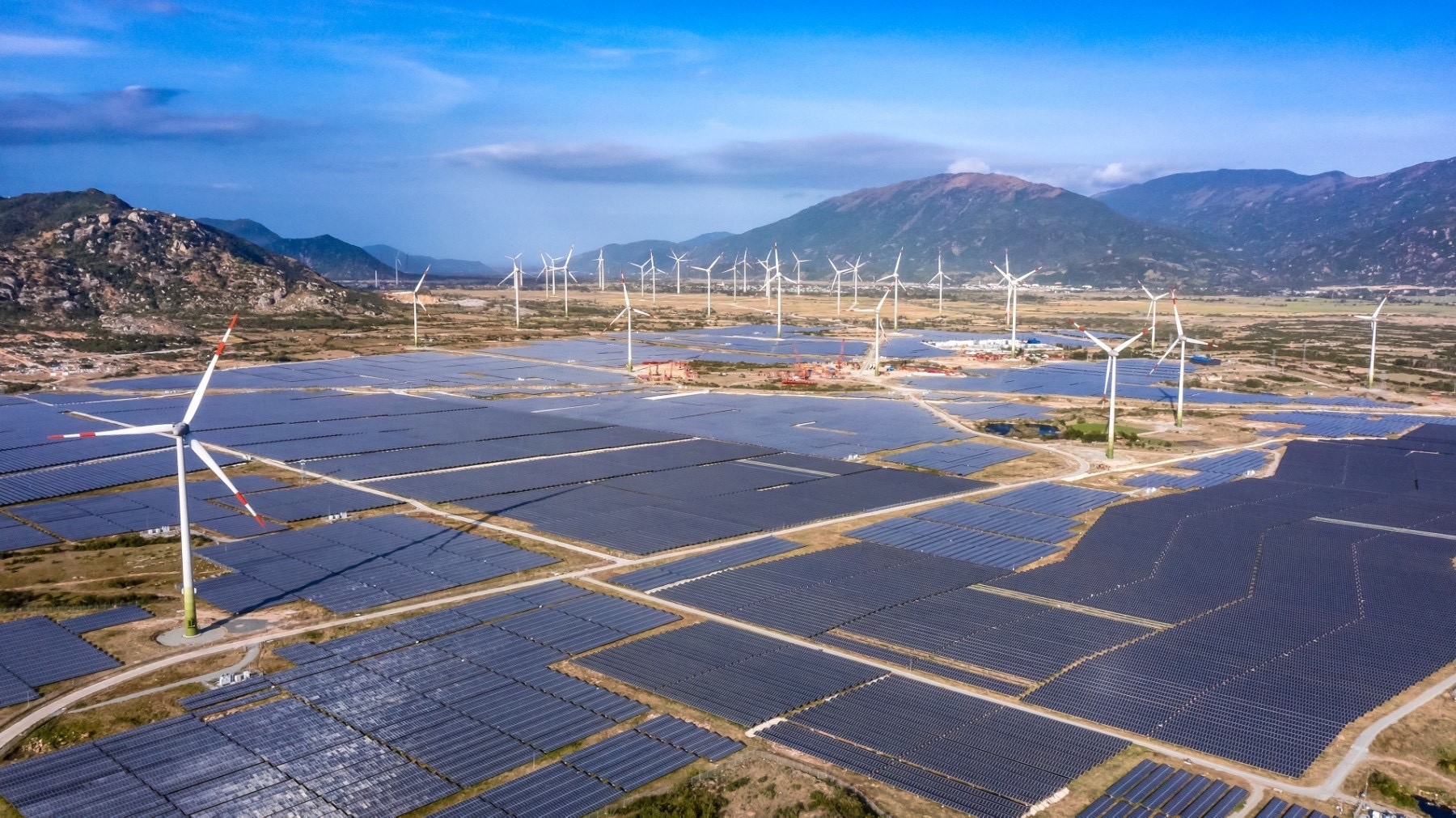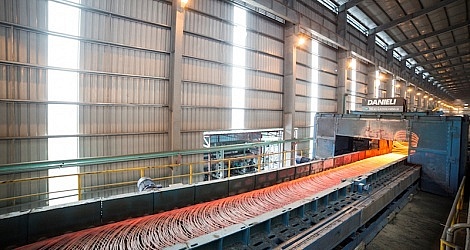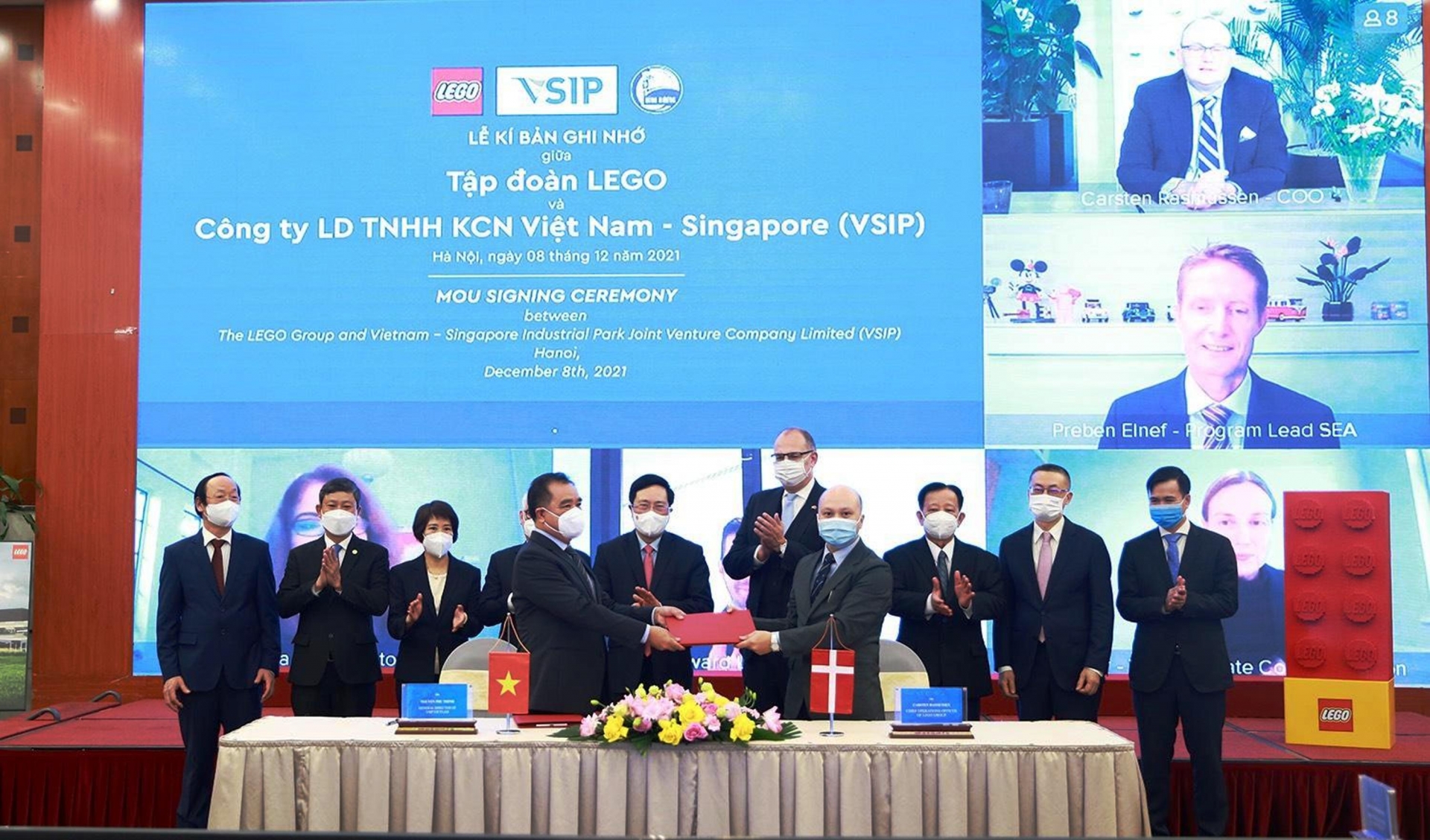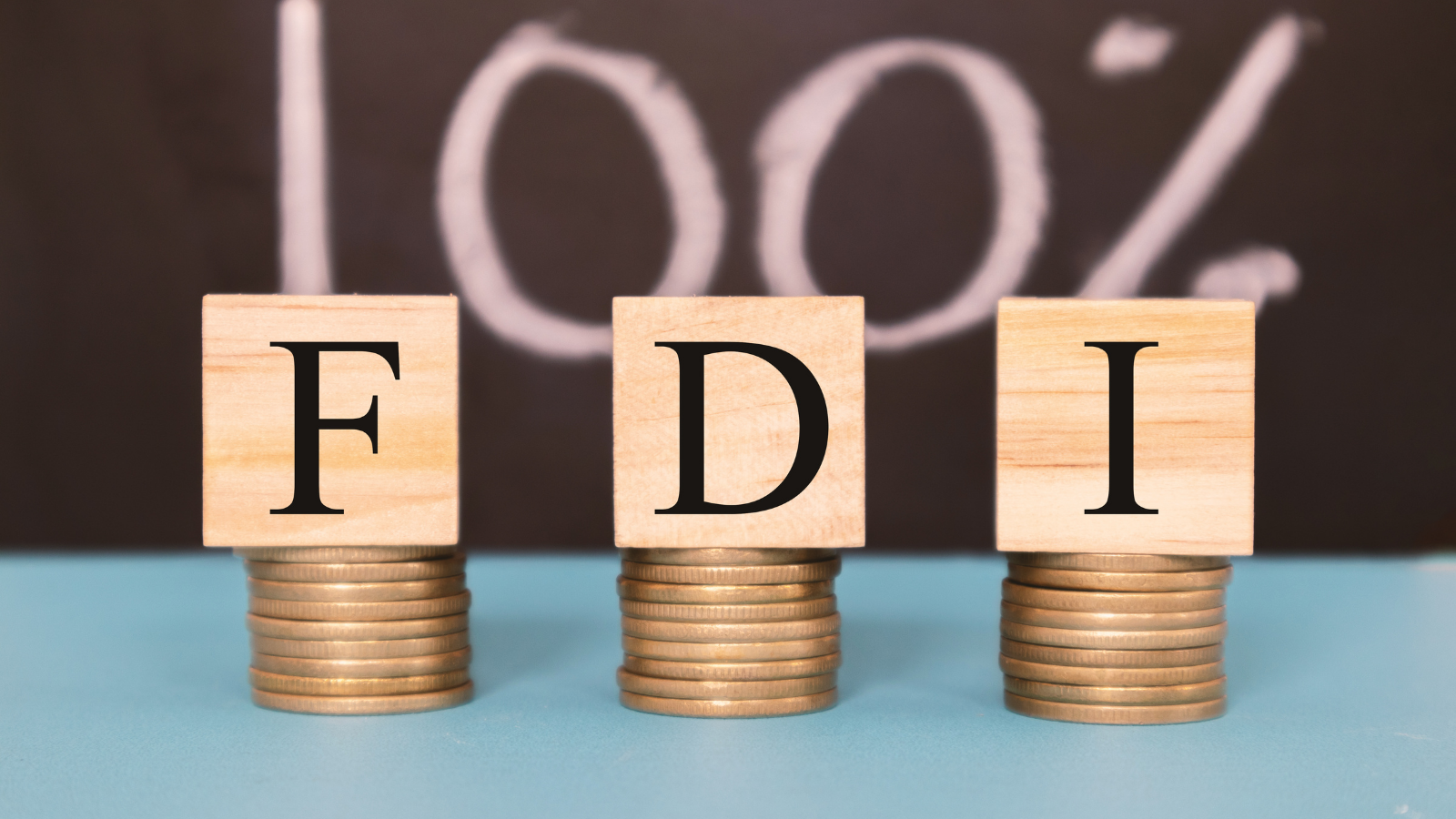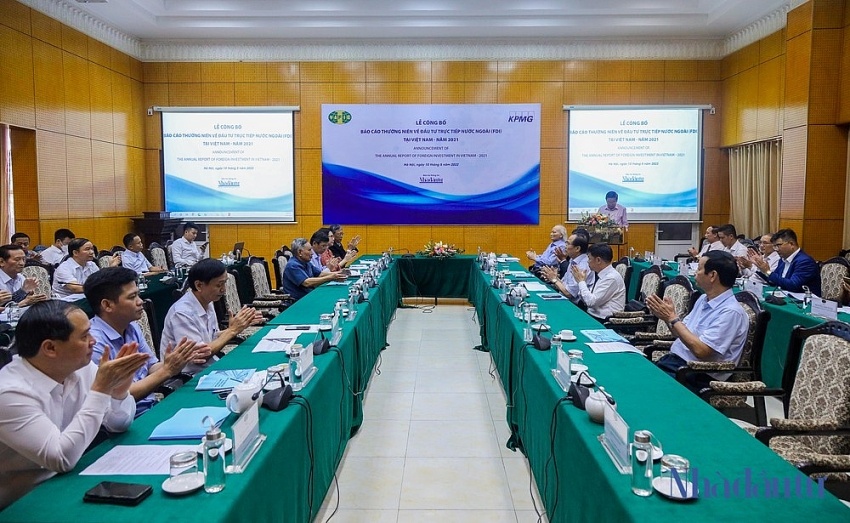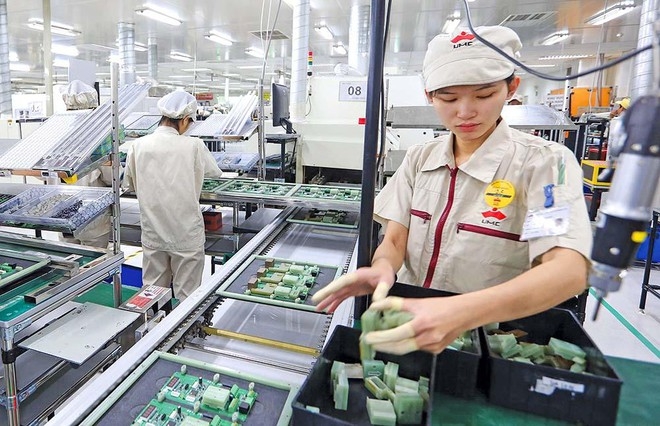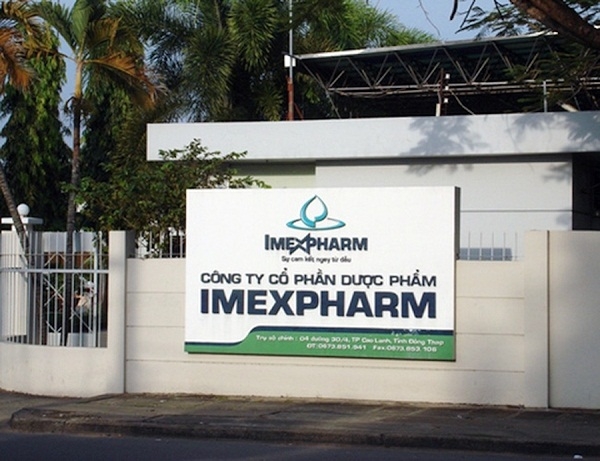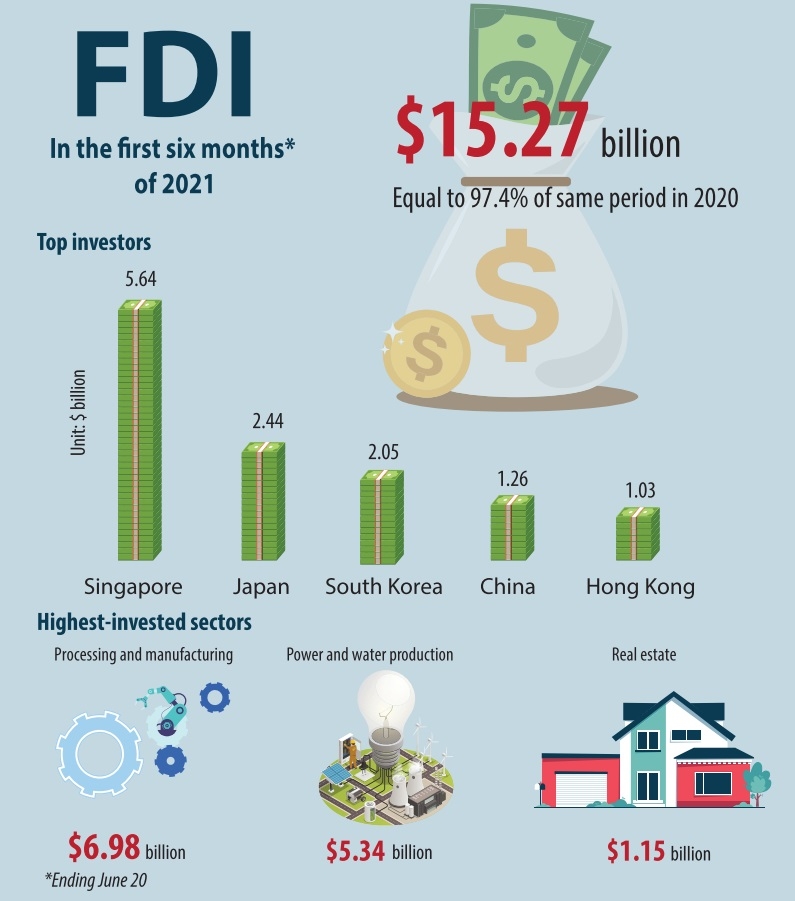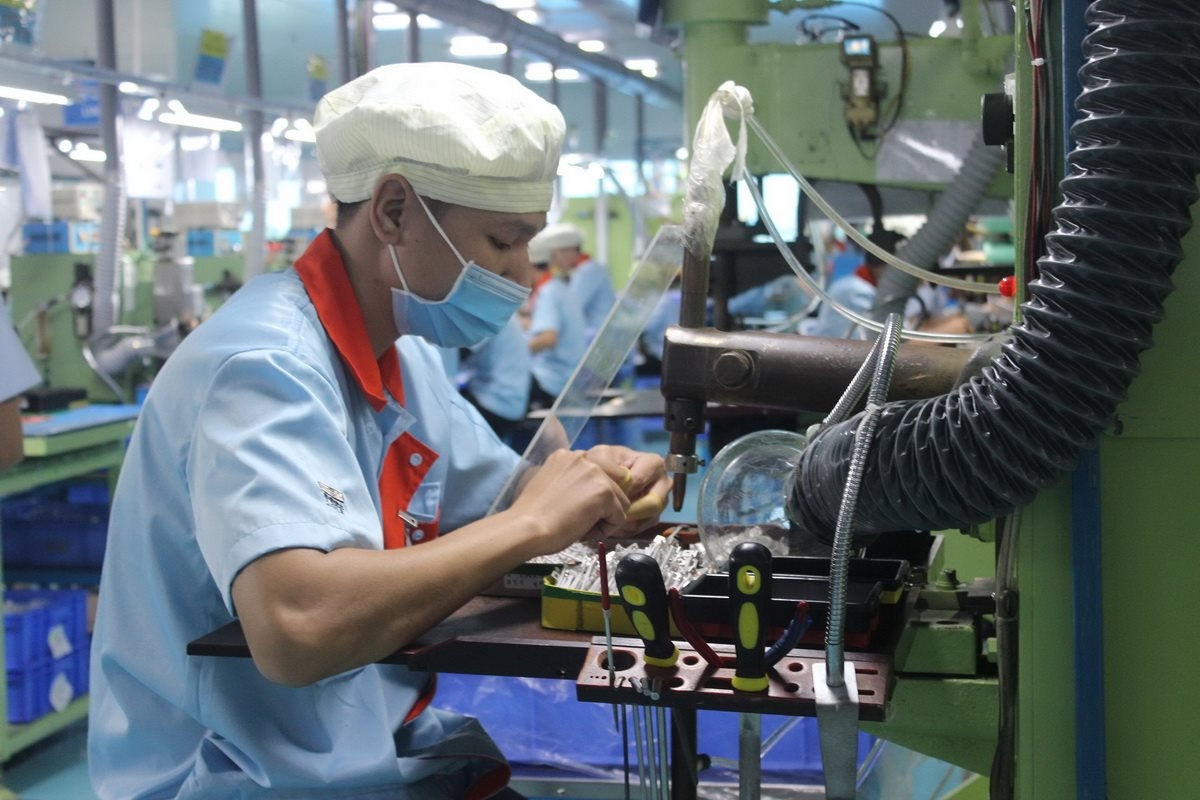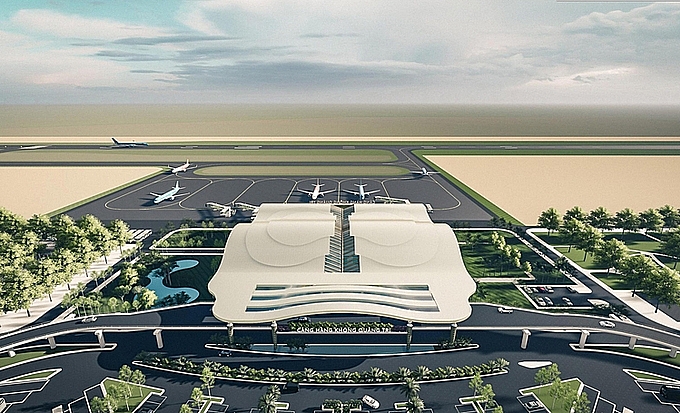Clearing Hurdles to Accommodate High-quality FDI Flows
Vietnam Business Forum - With rapid economic growth and a rising global trade position, Vietnam's supply chain has been continuously developed to become a preferred choice for manufacturers in the region. Vietnam is attracting more FDI inflows, especially high-quality capital.
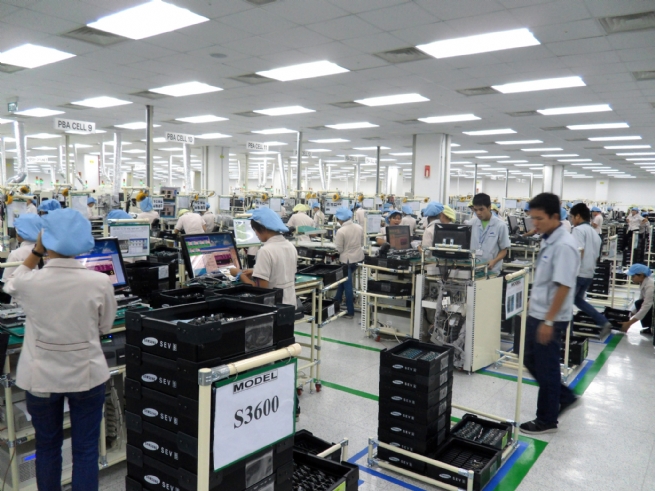
Increase in value and quality
After 35 years of implementing the open-door policy to attract foreign direct investment (FDI), 140 countries and territories around the world have invested in Vietnam. Foreign capital has flowed to most localities in the country, with world-leading brand names including Intel, Microsoft, Foxconn, Samsung, Sanyo, Sony, Fujitsu, Toshiba and Panasonic.
The annual report on foreign investment in Vietnam in 2021 recently released by the Vietnam Association of Foreign Invested Enterprises (VAFIE) also highlights optimistic results. The FDI sector currently accounts for about 25% of total social investment capital, 55% of total industrial production value and more than 70% of export value.
Notably, foreign investors actively acquire local shares. In 2021, despite the COVID-19 pandemic outbreak, the value of mergers and acquisitions (M&As) reached US$12 billion, up 150% year on year, nearing the all-time record of US$13.4 billion in 2017.
Macro data also showed more substantive changes in FDI projects. In 2021, the manufacturing and processing sector and professional, sci-tech activities attracted the most FDI funds, respectively accounting for 30.7% and 16.7% of the total new projects. Some colossal FDI projects (e.g. projects invested by Samsung) have become typical examples of enhancing connectivity and supporting capacity building for domestic component suppliers.
Given the selective FDI attraction policy which gives priority to quality rather than quantity, Vietnam has eliminated small-scale projects with little added value. Besides, the share of FDI capital into polluted industries and outdated technologies has diminished, replaced by high-quality, green ones that are powered by renewable energy.
Typically, LEGO Group of Denmark signed a memorandum of understanding to cooperate with Vietnam - Singapore Industrial Park Limited Company (VSIP) to build its first-ever carbon-neutral factory in Vietnam, partly energized by solar energy to leave no environmental pollution, dust and waste.
Institutional improvement
Resolution 50-NQ/TW of the Politburo highlights FDI attraction goals: US$150-200 billion 2021-2025 and US$200-300 billion in 2026-2030. The disbursed fund will reach US$100-150 billion in 2021-2025 and US$150-200 billion in 2026-2030. The localization rate will increase to 30% by 2025 and 40% by 2030.
To accomplish this goal and attract high-quality FDI inflows, Vietnam needs to further improve institutions and laws on FDI attraction, according to economic experts.
Dr. Phan Huu Thang, former director of the Foreign Investment Agency (FIA) under the Ministry of Planning and Investment, said that besides project selection, Vietnam needs to soon develop and implement a FDI attraction strategy to direct FDI attraction to central and local agencies.
In 2021-2030, the strategy needs to clearly identify priority areas to attract projects of advanced technology, new technology, high technology, clean technology, modern governance and added value with strong ripple effects on global production and supply chains to organically link the domestic economic sector.
Professor Nguyen Mai, President of VAFIE, said that Vietnam needs solutions to improve FDI attraction and utilization by upgrading the investment and business environment, supporting and removing difficulties for businesses.
The government should soon have criteria to gauge the performance of the FDI sector, he suggested. The evaluation criteria include 26 specific economic, social, environmental, and technological indicators, serving as a basis for foreign investors to count their own scores and for localities to screen and select investment projects. Besides, it should establish a research group in charge of FDI attraction when many FTAs and global agreements are set to come into effect soon.
Deputy Prime Minister Pham Binh Minh recently signed Decision 667/QD-TTg on approval of the Foreign Investment Cooperation Strategy in 2021 – 2030, which specifically aims to raise the rate of registered capital of some countries and territories in the country’s total FDI capital to more than 70% in 2021 - 2025 and 75% in 2026 – 2030. 50% more multinational corporations on the 500 Fortune list will have an operational presence in Vietnam.
The strategy puts forth nine solutions: Effectively implementing announced solutions; improving the business investment environment; developing an ecosystem of science, technology and innovation; modernizing and diversifying investment promotion.
The strategy aims for developing a strong domestic business sector, providing maximum support for startups, joint ventures and associations, and focusing on high technology, new technology and advanced technology.
In particular, it advocates supporting domestic enterprises to assess, select and receive technology from FDI firms, ensuring compatibility, synchronicity and suitability with development goals in each period.

